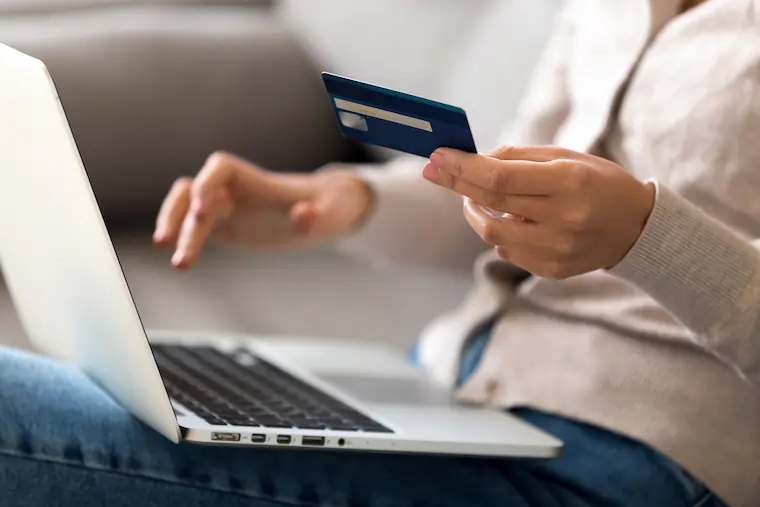Are you looking to answer “What does it mean to authenticate your payment?” Well, whether you received this message when trying to complete a purchase or your company’s merchant provider is asking you to verify a transaction, we’ve got you covered.
Below, we’ll give you the most clearcut answer available so you can navigate the payment authentication options for you or your business. If you’re a consumer, we will also outline the specific triggers that could be getting in your way of making a purchase.
Feel free to use the table of contents to jump ahead to any sections that are immediately relevant to your search.
Table of Contents
- What Does It Mean to Authenticate Your Payment?
- Payment Authentication 101
- Frequently Asked Questions
- Ready to Explore Your Options?
What Does It Mean to Authenticate Your Payment?
Payment authentication is the process of validating cardholder information to ensure that a purchase is being made by the cardholder. There are several common ways to authenticate payments, including CVV, ACS, and 3DS2.
Not surprisingly, payment authentication is typically tied to in-person and online purchases using a credit card or debit card. However, other methods of payment, ranging from bank transfers to secured orders like checks can also require authentication, albeit different in form. However, these other payment methods are outside the scope of this article and we will only be focusing on payment authentication methods for card-related purchases.
Do You Want Our Free Non-Resident Banking Guide?
Sign up here to receive our Free Non-Resident Banking Starter Guide and weekly updates on the best account opening options available:
Payment Authentication 101
Payment authentication is important for a few reasons. For example, it first protects consumers from their card data being stolen and used for unintended transactions. For this reason, when a card is used to complete payments in less savory industries the card issuer will often halt a payment from being completed until authorization is received.
Secondly, payment authentication protects the businesses where that card data is being used against higher refunds and fraud claims. And lastly, it also protects the banks and financial institutions from the financial loss that can occur as a result of fraudulent transactions.
In other words, payment authentication is an important part of the entire financial ecosystem that protects all of the key stakeholders, consumers, companies, and financial institutions.
So, how does payment authentication work?
Payment Authentication Methods
In short, all payment authentication relies on verifying specific data in order to confirm that the individual making a charge is the cardholder. As referenced above, there are several common forms of authentication, including:
CVV: Card Verification Value
CVV authentication is commonly used for online purchases or purchases where the cardholder is not present. For example, this refers to inputting the three or four-digit CVV code to authenticate that the purchase is made by the cardholder.
AVS: Address Verification System
AVS is a “behind the scenes” form of authentication that involves comparing the billing address provided during the checkout process to the billing address maintained by the credit card issuer. In other words, if you do not provide the same billing address during checkout as your credit card issuer has on file, your transaction could be denied.
3DS2: 3-D Secure 2
3DS2 allows payment processors to crosscheck transactions in the checkout process. In other words, the payment processor that is processing the transaction can determine the risk of the transaction by assessing user information such as an address, device, transaction amount, and location.
Frequently Asked Questions
Below are three of the most common questions that we receive from people looking to understand what it means to authenticate a payment. If you have further questions you would like answered, don’t hesitate to get in touch with us directly.
What Does It Mean to Authenticate a Mobile Transaction?
The specific form of authentication will result from the financial institutions involved. This includes the payment processor that is processing the transaction and the issuer of the credit card that you are using for the transaction.
What Does It Mean When It Says This Transaction Requires Payment Authentication?
When a transaction requires payment authentication, it usually means that a payment processor or card issuer has requested that the cardholder verify their identity. This verification often takes the form of CVV, AVS, or 3DS2 verification as detailed above.
Ready to Explore Your Options?
If so, you can access GlobalBanks Insider and start the process of applying for an offshore account in a few clicks.
GlobalBanks Insider is a dedicated account opening solution that involves direct support from our team and direct introductions to the banks of your choosing. It gives you instant access to the…
+ Direct support from a team of banking experts
+ Direct introductions to your desired banks
+ Answers to your most pressing questions and challenges
+ Expert insights on which banks to choose & why
+ Plus, FULL access to our entire suite of account opening tools and intelligence!
And “yes!” GlobalBanks Insider is designed to help foreign and non-resident individuals and companies open bank accounts.
You can learn more on the Products page on our website.

